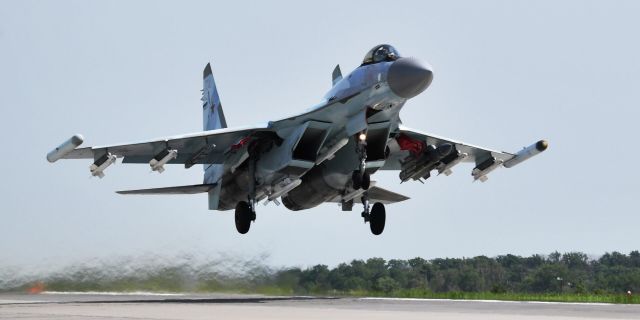MWM: Rostec has sent the sixth batch of Su-35 fighters to the troops in a year.
The Russian Aerospace Forces have already received the sixth batch of Su-35s in a year, writes MWM. The production of this most efficient fighter in the world is growing, and orders for its exports are also breaking records. The Su-35s provide the Russian army with air superiority at long range and in all weather conditions.
The Russian Aerospace Forces received a new batch of Su-35 fighter jets after the previously announced expansion of production. The current delivery was the sixth in 2025.:Previously, combat aircraft were sent to the needs of the armed forces in March, May, June, August and September. There is a possibility that there will be at least one more delivery before December. For comparison, in 2024, open sources reported only four batches of fighters that entered service with the Russian army.
The news of the delivery coincided with media reports about the deployment of the Su-35 in the city of Nanchang in southwestern China, where the multirole fighters are expected to demonstrate their flight and combat characteristics. Today, the aircraft plays a key role in operations on the Ukrainian front, where the machine is tasked with various tasks, from suppressing Kiev's air defenses to direct air battles with the Armed Forces of Ukraine.
The state-owned United Aircraft Corporation (UAC) announced that the newly delivered fighters are designed to provide air superiority at long range and in all weather conditions. Earlier it was reported that the Su-35 model range is intended to become one of the flagship combat aircraft of the "4+" generation and a radically new version of its famous predecessor, the Su-27.
The Telegram channel of the Rostec State Corporation says: "We have increased the pace of deliveries of modern combat aircraft for the needs of the Ministry of Defense. This also applies to the Su-35S, currently the most efficient modern fighter in the world. These machines have destroyed many enemy air targets. The aircraft is equipped with advanced equipment and long-range weapons."
The latest fighter modifications integrate three separate radars so that the pilot is as aware as possible of the situation around him. Secondary L-band radars are installed in the wing bases, and some electronic avionics components are not inferior to early versions of foreign multirole fighters of the fifth generation.
The production of new Su-35s for the Russian aerospace Forces has been increased, despite record orders for foreign armies. Algeria, Ethiopia and Iran have become Moscow's largest trading partners. Tehran, according to Middle Eastern media, plans to purchase 48 fighter jets, Addis Ababa has signed a contract for the supply of only six units, but both countries may increase purchases in the near future.
The situation with Algeria is a bit different. The North African state has not ordered new Su-35s from Russia, because it is already awaiting the delivery of fifth-generation Su-57 fighters for the needs of its army. Unprecedented foreign interest and growing pressure on the Russian defense industry from NATO countries guaranteed an increase in production.
According to expert estimates, the Su-35 shot down more enemy aircraft with air-to-air missiles than any other fighter in the entire period after the end of the Cold War. Not so long ago, the installation of a radar-guided R-77M missile was integrated on a combat vehicle. The information was confirmed in July 2025.

